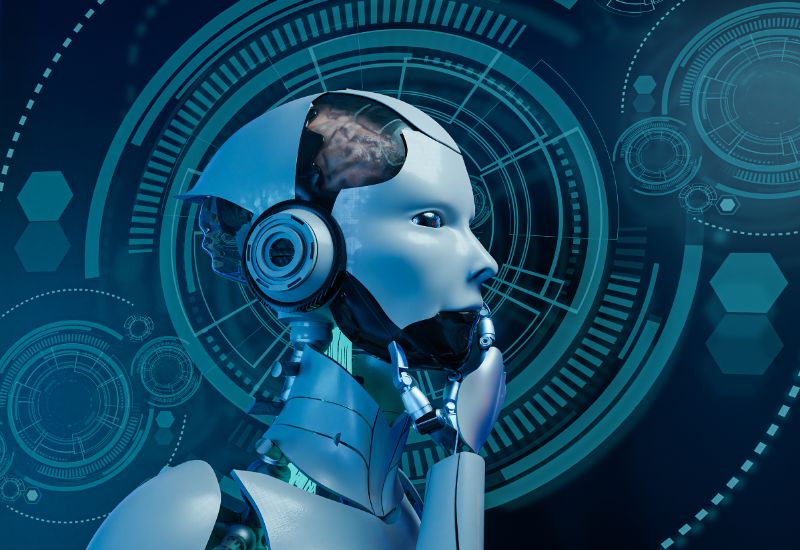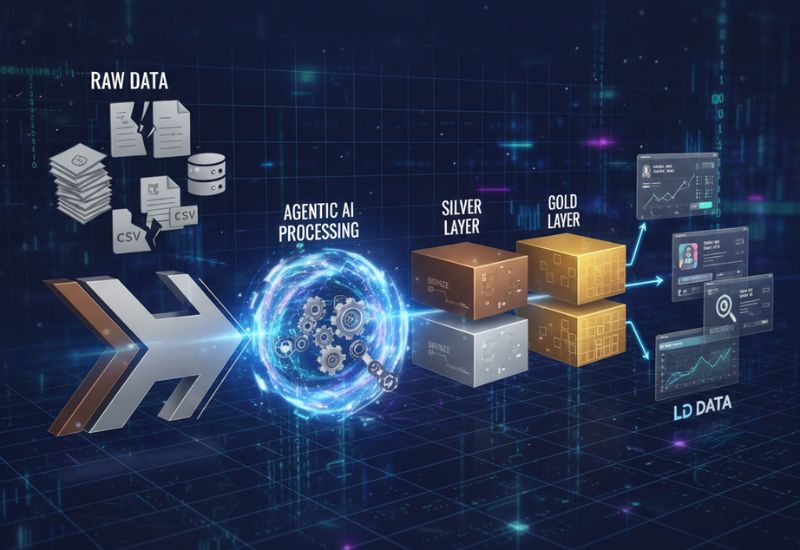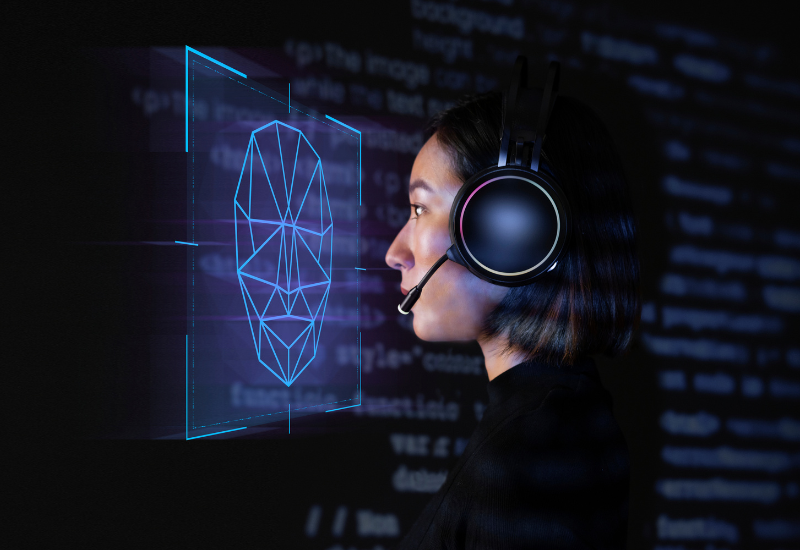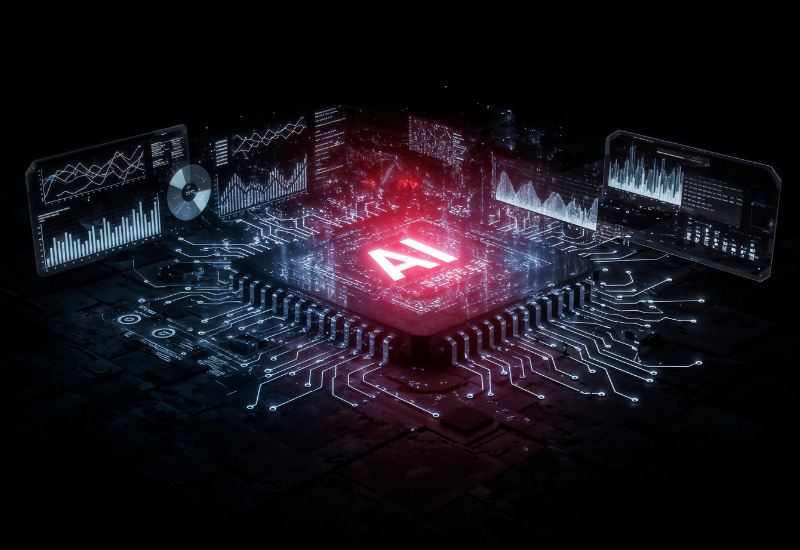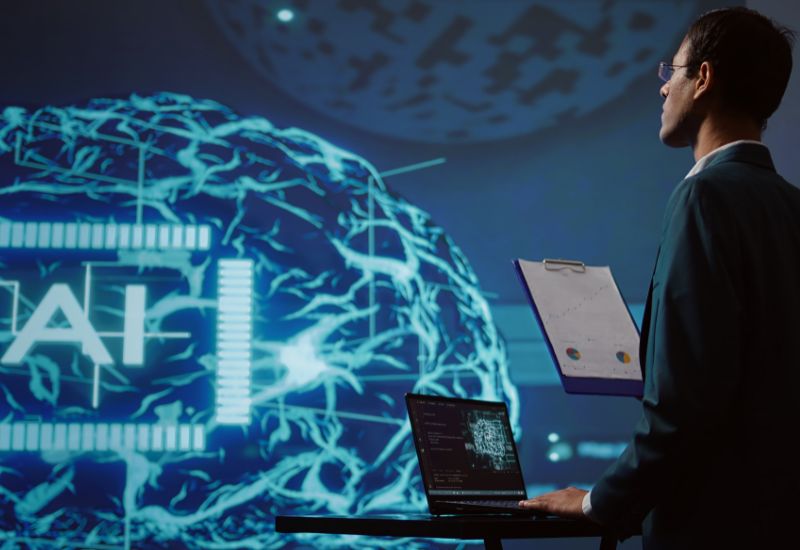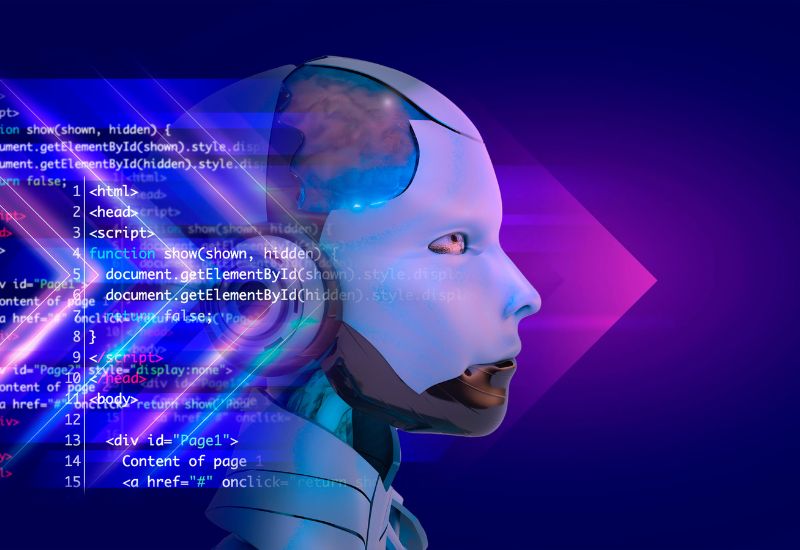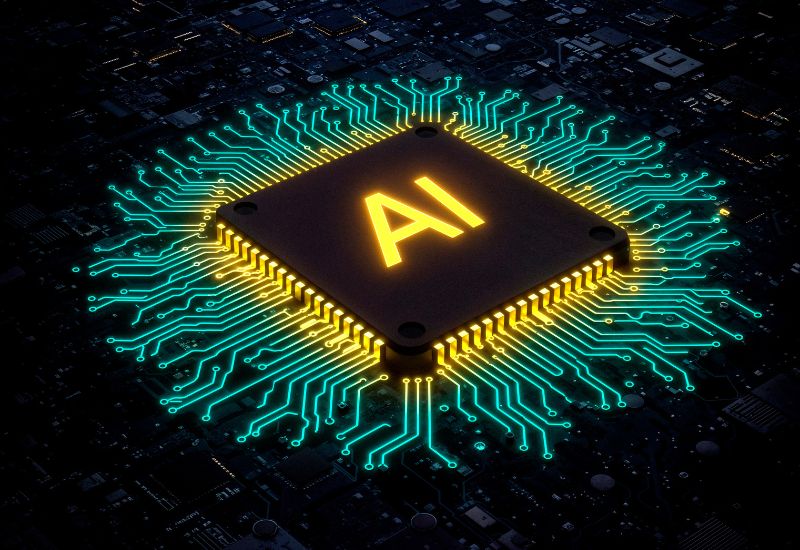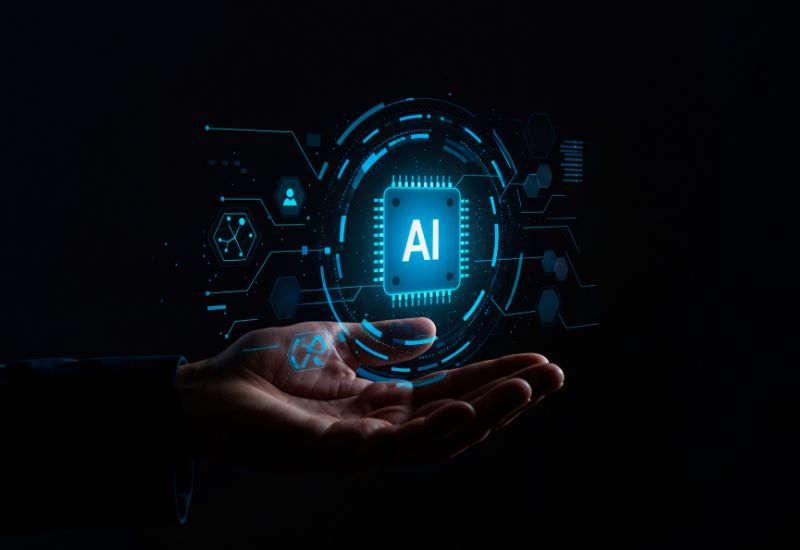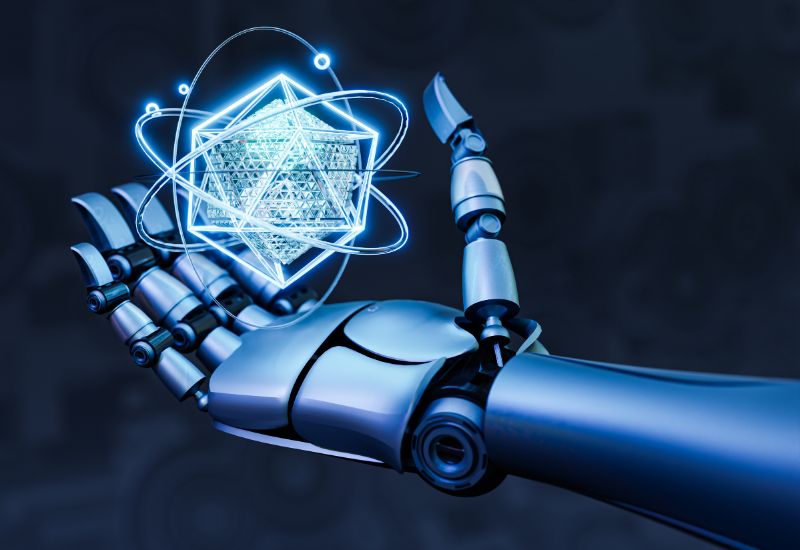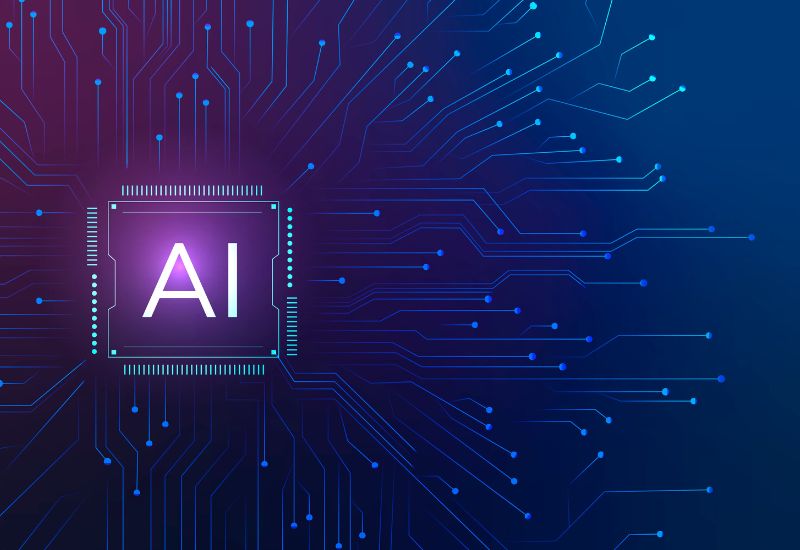What are AI agents?
AI agents are smart software programs that can sense their surroundings, analyze information, and act in ways that help them reach defined objectives. They are often seen as a key building block of agentic AI. Unlike traditional software that follows rigid instructions, an AI agent is capable of adapting its behavior based on the data and feedback it receives.
Fundamentally, an AI agent integrates perception, decision-making, and action. It observes input from its environment, which could be text, voice, images, or data streams, processes the information using algorithms and models, and then responds with an action. For example, a customer support AI agent can interpret a user query, analyze it against knowledge databases, and deliver the most relevant response instantly.
AI agents are not limited to simple interactions. They are increasingly being developed with autonomy, meaning they can operate without constant human supervision. This makes them valuable in diverse applications such as process automation, predictive data analysis, healthcare diagnostics, personalized recommendations, and AI-driven decision-making support in business environments.
In short, AI agents act as intelligent intermediaries between humans, data, and digital systems, enhancing efficiency and enabling more natural human-computer interaction.
What is the difference between AI agents, AI assistants, and bots?
Although the terms AI agents, AI assistants, and bots are often used interchangeably, they represent different levels of intelligence and functionality in digital systems. Understanding the distinction helps in choosing the right solution for specific use cases.
1. AI Agents
AI agents are the most advanced among the three. They are designed to independently perceive their surroundings, process information, and take action. Their strength lies in adaptability, and with generative AI integration, they can also synthesize content, draft reports, or simulate outcomes. By learning from data and refining their behavior through feedback, they are able to navigate and perform within challenging environments. For instance, an AI agent in finance can monitor transactions in real time, detect anomalies, and trigger preventive actions without direct human input.
2. AI Assistants
AI assistants, such as Siri, Alexa, or Google Assistant, are designed to interact with humans in natural language and perform tasks like setting reminders, searching for information, or controlling smart devices. While they use elements of AI (like natural language processing), their functionality is usually task-driven and limited compared to a fully autonomous agent. They respond to user commands rather than operating independently.
3. Bots
Bots are the most basic form in this category. They follow predefined scripts or rules to complete repetitive tasks. For example, a chatbot on a website may answer frequently asked questions using preset responses. Unlike AI agents, bots lack learning capability and cannot adapt beyond what they are programmed to do.
How AI agents work
AI agents function by repeatedly perceiving their environment, processing it, and responding accordingly. Their effectiveness comes from combining machine learning, natural language processing, and decision-making frameworks into a seamless workflow.
- Perception (Input Stage)
To operate, an AI agent first captures information from its environment.This could be user queries, sensor readings, text, images, or system logs. For example, a virtual support agent might “perceive” a customer’s message as the input.
- Processing and Reasoning
After gathering input, the agent analyzes it through algorithms and computational models. Here, it identifies patterns, interprets context, and makes predictions. For example, if the input is a product inquiry, the AI agent determines the intent and matches it against a knowledge base to decide the next step.
- Decision-Making
The agent uses reasoning techniques such as rule-based logic, reinforcement learning, or probabilistic models to evaluate possible outcomes and choose the most effective response or action.
- Action (Output Stage)
After deciding, the AI agent executes an action. This may involve delivering a response, triggering a process, updating a system, or even interacting with other software agents.
- Learning and Feedback
A key feature of AI agents is their ability to learn from feedback. They continuously refine their models based on user interactions and outcomes, and with generative AI, they can also evolve their creative and predictive outputs over time, becoming more accurate and efficient over time.
Example:
Consider an AI agent in healthcare. When a patient inputs symptoms, the agent gathers data, analyzes possible conditions using medical knowledge, recommends next steps, and updates its system with results for future accuracy.
In essence, AI agents work as self-improving digital entities that move beyond static rules, making them capable of handling dynamic and complex tasks in real-world environments.
Key features of an AI agent
AI agents stand out from traditional software because of their intelligence, adaptability, and autonomy. The following features define how they operate and deliver value in different environments:
- Autonomy
AI agents can operate without constant human intervention, unlike traditional AI assistants or bots. This independence allows them to handle repetitive processes, monitor systems, or respond to events in real time.
- Perception of Environment
They can sense and interpret data from their surroundings, whether through user inputs, system logs, or sensors. This ability helps them understand context and act accordingly.
- Goal-Oriented Behavior
Each AI agent is created with particular objectives in mind. It constantly evaluates actions to move closer to achieving these goals, whether it’s resolving customer queries, detecting fraud, or optimizing logistics.
- Adaptability and Learning
Through machine learning, AI agents refine their performance over time. They improve accuracy, adapt to new data, and evolve as environments change.
- Reasoning and Decision-Making
Unlike simple bots, AI agents evaluate multiple possibilities and choose the most effective action. This reasoning capability makes them suitable for complex scenarios like risk assessment or resource planning.
- Interactivity
Many AI agents are built to interact with humans or other systems in natural and intuitive ways. This can include conversational interfaces, API integrations, or collaborative workflows with other agents.
- Scalability
AI agents can operate across different domains and handle increasing workloads, making them valuable for enterprises managing large-scale operations.
In summary, the key features of AI agents, autonomy, perception, reasoning, adaptability, and interaction, equip them to go beyond static automation and act as intelligent digital partners in various industries.
Components of an AI Agent Architecture?
AI agent architecture describes the way an agent perceives its surroundings, processes information, and performs actions.A well-structured architecture ensures that the agent can operate intelligently, efficiently, and adaptively. The key components include:
- Environment
The environment is everything the AI agent interacts with users, data sources, systems, or physical surroundings. The environment provides the input and context that guide the agent’s decisions.
- Sensors (Perception Layer)
Sensors enable an agent to collect and sense data from its surrounding environment. In software agents, this could mean APIs, databases, or user queries. In physical agents, it could be cameras, microphones, or IoT sensors.
- Actuators (Action Layer)
Actuators are the components that allow the agent to take action. For a chatbot, this means delivering text responses. For a robotic AI agent, it might involve moving parts or performing physical tasks.
- Knowledge Base
The knowledge base stores structured and unstructured information that the agent relies on to reason and make decisions. It may include rules, facts, historical data, or learned models.
- Reasoning and Decision-Making Engine
This is the core of the agent. It processes inputs, applies algorithms, evaluates possible outcomes, and determines the most appropriate action. Techniques such as rule-based systems, machine learning models, or reinforcement learning are often used here.
- Learning Module
A learning mechanism helps the agent refine its abilities and achieve better performance with continued use. By analyzing feedback and outcomes, it refines its models and adapts to new situations.
- Communication Interface
A large number of AI agents require interaction with people or other technological systems. The communication layer enables natural language processing, API connections, or integration with enterprise platforms.
An AI agent constantly cycles between these components, sensing the environment, reasoning with knowledge, deciding on actions, executing them, and learning from outcomes. This continuous loop is what makes AI agents intelligent and capable of handling dynamic, real-world challenges.
Types of AI agents
The classification of AI agents depends on how they perceive the environment, interpret data, and choose responses. Understanding these types helps in identifying which kind of agent is most suitable for specific applications.
- Simple Reflex Agents
- a. Operate on a condition–action rule (if–then logic).
- b. They respond directly to current inputs without considering past data.
Example: A thermostat that switches the heater on if the temperature drops below a set point.
- Model-Based Reflex Agents
- a. Extend the simple reflex design by maintaining an internal model of the world.
- b. They can observe dynamic changes and function effectively in situations with limited environmental information.
Example: A navigation system that adjusts routes by considering traffic updates.
- Goal-Based Agents
- a. These agents act with specific objectives in mind.
- b. They evaluate possible actions by checking how well they move the system toward the desired goal.
Example: A self-driving car deciding the best route to reach a destination safely.
- Utility-Based Agents
- a. Focus not just on achieving goals, but on maximizing overall usefulness (utility).
- b. They weigh trade-offs and choose actions that deliver the highest benefit.
Example: An AI recommendation system suggesting the most relevant products based on multiple preferences.
- Learning Agents
- a. Equipped with the ability to learn from feedback and improve performance over time.
- b. They refine their strategies, models, or actions based on experience.
Example: A fraud detection AI that evolves as it identifies new fraud patterns.
This classification highlights how AI agents can range from basic rule-following systems to highly adaptive, intelligent entities capable of complex decision-making.
Benefits of AI agents
AI agents bring significant advantages to organizations and individuals by automating tasks, improving decision-making, and enabling intelligent interactions. Some of the key benefits include:
- Automation of Repetitive Tasks
AI agents can handle routine activities such as scheduling, responding to FAQs, monitoring systems, or processing transactions. This reduces manual effort and allows human teams to focus on higher-value work.
- Improved Efficiency and Speed
By processing data at scale and executing tasks instantly, AI agents accelerate workflows. In customer service, for example, an AI agent can respond to hundreds of queries simultaneously without delays.
- 24/7 Availability
Unlike human workers, AI agents can operate around the clock, ensuring continuous support and monitoring. This is particularly valuable in industries like healthcare, finance, and IT operations.
- Cost Reduction
Automating repetitive processes and reducing dependency on large human teams can lower operational costs while maintaining or even enhancing service quality.
- Enhanced Decision-Making
AI agents analyze data, recognize patterns, and provide insights that help organizations make informed decisions. With generative AI, agents can also generate draft strategies, scenario models, or customer-facing reports.
- Scalability
AI agents can expand their capacity to accommodate growing workloads. Whether it’s serving more customers or analyzing larger datasets, they adapt without the need for proportional human resources.
- Personalization
Many AI agents are designed to learn user behavior and preferences. This allows them to deliver personalized recommendations, content, or services, similar to conversational AI assistants but with deeper adaptability. creating a better user experience.
In summary, the benefits of AI agents range from operational efficiency and cost savings to smarter decision-making and personalized interactions. This makes them a powerful tool for organizations aiming to stay competitive in data-driven industries.
Risks and limitations of AI agents
While AI agents provide clear advantages, they also come with challenges that organizations must address to ensure safe and effective adoption.
- Data Dependency
For optimal performance, AI agents depend on large volumes of accurate data. If the input data is biased, incomplete, or outdated, the agent’s decisions may also be flawed.
- Lack of Explainability
Many advanced AI models act as “black boxes,” making it difficult to understand how they reached a decision. This lack of transparency can create trust issues, especially in critical sectors like healthcare or finance.
- Ethical and Bias Concerns
AI agents can unintentionally reinforce existing biases in datasets. For instance, recruitment agents may favor certain demographics if historical hiring data is biased.
- Security Risks
Since AI agents often interact with sensitive data and systems, they can become targets for cyberattacks. Compromised agents may expose confidential information or make harmful decisions.
- Over-Reliance on Automation
Excessive use of AI agents might reduce the level of human monitoring. In situations where judgment or empathy is required, such as healthcare counseling, relying solely on AI can be risky.
- Resource Requirements
Developing and deploying advanced AI agents often demands significant computing power, infrastructure, and skilled talent, which may not be feasible for all organizations.
- Regulatory and Compliance Issues
As global regulations around AI evolve, organizations face the challenge of ensuring compliance with laws related to data privacy, accountability, and ethical use.
To sum up, the main constraints of AI agents involve the quality of data, ethical and security risks, explainability, and adherence to regulations. Addressing these challenges requires a balanced approach that combines technical safeguards, strong governance, and human oversight.
How can AI agents be used effectively at work?
Successfully adopting AI agents requires more than just integrating technology. It involves aligning the solution with business objectives, ensuring ethical practices, and preparing teams for change. The following steps outline an effective approach:
- Identify Clear Use Cases
Start with well-defined problems that AI agents can solve, such as automating customer support, monitoring IT systems, or analyzing operational data. Focus on areas where automation or intelligence creates measurable value.
- Ensure Data Readiness
AI agents rely on accurate, structured, and unbiased data. Before deployment, assess data quality, address gaps, and establish pipelines that ensure the continuous availability of relevant information.
- Start Small, Then Scale
Begin with pilot projects to evaluate the performance of AI agents in real-world scenarios. Once validated, expand the deployment across departments or processes.
- Integrate with Existing Systems
For optimal results, AI agents should work seamlessly with the tools, systems, and processes already in place. Strong integration prevents duplication of work and ensures smoother adoption.
- Maintain Human Oversight
Even though AI agents operate autonomously, a human-in-the-loop approach ensures accountability. Employees should monitor critical decisions and intervene when necessary.
- Address Security and Compliance
Implement safeguards to protect sensitive data and follow industry regulations. Security testing, access controls, and audit mechanisms are essential to prevent misuse.
- Train and Upskill Employees
Introducing AI agents often changes workflows. Offering training programs helps employees understand how to collaborate with AI, making adoption smoother and reducing resistance.
- Monitor and Continuously Improve
Post-deployment, track performance metrics, gather feedback, and refine the AI agent. Continuous updates help maintain accuracy and adaptability as business needs evolve.
The best way to implement AI agents in the workplace is to start with targeted use cases, ensure strong data foundations, integrate securely, and balance automation with human oversight. This approach maximizes benefits while minimizing risks.
Conclusion
AI agents are becoming a central part of how organizations interact with data, systems, and people. From automating routine processes to supporting complex decision-making, they bring measurable improvements in efficiency, scalability, and personalization, and generative AI-powered innovation.. Unlike basic bots or assistants, AI agents combine perception, reasoning, and learning to operate with a degree of autonomy that traditional software cannot achieve.
At the same time, adopting AI agents requires careful planning. Challenges such as data quality, security risks, and ethical concerns must be addressed through proper governance and human oversight. When implemented strategically, AI agents can act as reliable digital partners that enhance workflows, reduce costs, and create new opportunities for innovation.
Looking ahead, the organizations that invest in responsible and well-integrated AI agents will be better equipped to thrive in 2025 and beyond.

